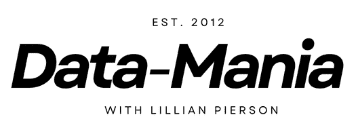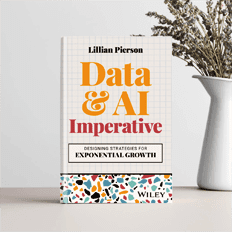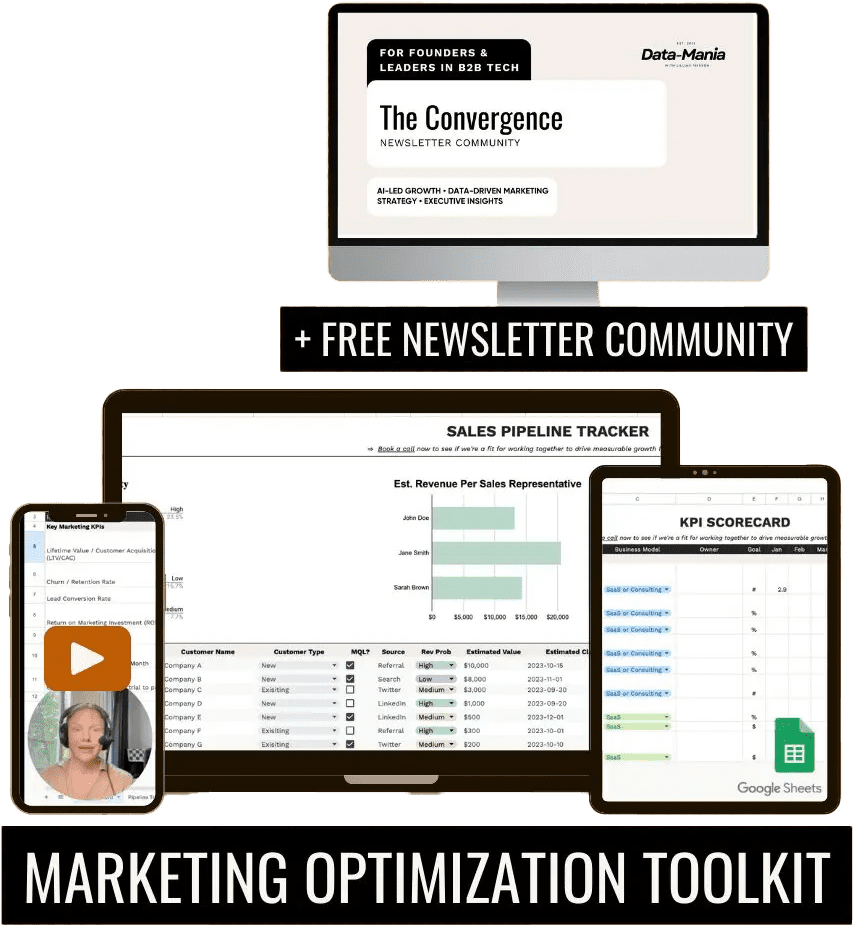Collaborative lead scoring aligns sales and marketing teams to identify the best leads using shared data and insights. This approach improves lead quality, optimizes resources, and drives better conversions by combining expertise from both teams. Here’s what you need to know:
- What It Is: A system where sales and marketing collaborate to rank leads based on shared criteria.
- Why It Matters: Reduces wasted effort, improves lead quality, and creates a unified strategy.
- Key Benefits:
- Higher lead-to-conversion rates.
- Focus on leads most likely to close.
- Data-driven decisions from integrated tools.
Quick Setup Steps:
- Build a Cross-Functional Team: Sales, marketing, and operations work together.
- Define Your Ideal Customer Profile (ICP): Use firmographics, behaviors, and engagement patterns.
- Create Scoring Criteria: Rank leads based on firmographic, behavioral, and engagement data.
- Use Tools: CRM, marketing automation, and analytics platforms for seamless implementation.
- Regular Updates: Adjust scoring every 3-6 months based on performance and market trends.
Collaborative lead scoring ensures sales and marketing stay aligned, enabling smarter decisions and better results. Ready to optimize your lead strategy? Let’s dive in.
How To Build a Lead Scoring Model & Example
Setting Up a Collaborative Lead Scoring Model
Creating an effective lead scoring model requires assembling the right team and clearly defining your target customers. Here’s how to set up this framework step by step.
Forming a Cross-Functional Team
The first step is bringing together team members from different departments. Studies show that over 75% of cross-functional teams struggle with misalignment and poor communication [1]. To avoid these issues, focus on building a well-structured team with clearly defined roles.
Here’s a breakdown of key roles and their responsibilities:
| Role | Responsibility | Key Contribution |
|---|---|---|
| Sales Representatives | Offer customer insights | Share knowledge about lead quality and conversion trends |
| Marketing Analysts | Provide campaign data | Deliver engagement metrics and campaign performance insights |
| Operations Manager | Optimize processes | Ensure smooth data integration and streamline workflows |
| Team Leader | Coordinate efforts | Manage strategy, communication, and overall collaboration |
To keep things running smoothly, use tools like project management software, dedicated communication channels, and weekly syncs. Each team member plays a vital role in ensuring the lead scoring model is both accurate and actionable.
Defining the Ideal Customer Profile and Buyer Personas
A clear Ideal Customer Profile (ICP) is essential for success. Teams with a well-defined ICP report 36% higher retention rates and 38% better win rates [2].
Your ICP should include these key elements:
| Component | Description | Example Criteria |
|---|---|---|
| Firmographics | Company characteristics | Industry, size, revenue |
| Technology Usage | Current tools and systems | Technology stack, integration needs |
| Customer Engagement Behaviors | Interaction patterns | Website visits, content engagement |
| Decision Makers | Key stakeholders | Role, authority level |
Workshops are a great way to gather input from different teams and refine your buyer personas. To keep your ICP and personas relevant, review and update them regularly based on:
- Feedback from customers and interviews
- Insights from sales conversion data
- Marketing performance metrics
- Shifts in market trends and industry developments
With a clear understanding of your ICP and buyer personas, your team can confidently create scoring criteria that align with your business goals.
Creating and Using the Lead Scoring System
Now that you have your cross-functional team and Ideal Customer Profile (ICP) in place, the next step is to create and implement your lead scoring system.
Choosing Lead Scoring Criteria
A scoring framework helps you evaluate leads based on specific criteria. Here’s an example breakdown:
| Criteria Type | Scoring Elements | Weight Range |
|---|---|---|
| Firmographic | Company size, revenue, industry fit | 30-40% |
| Behavioral | Website visits, content downloads, demo requests | 25-35% |
| Engagement | Email responses, webinar attendance, social interaction | 20-30% |
| Demographic | Job title, decision-making authority, department | 15-25% |
For example, downloading a pricing guide is typically weighted higher than simply viewing a blog post. Adjust these weight ranges to fit your sales cycle and industry needs.
Don’t forget to regularly review and update your scoring system to weed out unqualified leads and ensure accuracy.
Using Negative Scoring and Score Decay
Negative scoring is key to filtering out leads that aren’t worth pursuing. Leads might lose points for actions like:
- Unsubscribing from emails
- Staying inactive for long periods
- Indicating budget or alignment issues
- Falling outside your target company size
To keep scores current, use automated score decay. For instance, you could reduce a lead’s score by 10-15% after 30 days of inactivity. This ensures your sales team focuses on the most engaged prospects.
Selecting Tools and Technology
Once your scoring system is ready, you’ll need the right tools to implement and maintain it effectively. Here’s a quick overview:
| System Type | Purpose |
|---|---|
| CRM Platform | Centralizes lead data |
| Marketing Automation | Tracks behaviors |
| Analytics Tools | Measures performance |
| Sales Intelligence | Enriches lead information |
To make things easier, go for platforms with built-in integrations. This keeps your data consistent and simplifies the setup process.
sbb-itb-e8c8399
Improving and Sustaining the Lead Scoring Process
Monitoring Key Metrics and Performance Indicators
To keep your lead scoring system effective, it’s important to track the right metrics consistently. Focus on these key areas to measure your model’s success:
| Metric Type | What to Measure | Target Goal |
|---|---|---|
| Conversion | Lead-to-opportunity rate | 15-25% improvement |
| Velocity | Sales cycle duration | 20-30% reduction |
| Quality | SQL-to-close ratio | 25%+ increase |
| Revenue | Deal size from scored leads | 30%+ growth |
Automated reports are a great way to identify trends and address potential issues early. By relying on data, you can make a strong case for ongoing investment in your lead scoring program. But tracking metrics is just the beginning – collaboration between sales and marketing is essential to keep the model effective and up-to-date.
Creating a Feedback Loop Between Sales and Marketing
For a lead scoring model to thrive, sales and marketing teams must work together closely. Establishing a feedback loop ensures the model stays accurate and aligned with business goals. Use tools like surveys, alignment meetings, and CRM data reviews to gather insights.
Key Feedback Practices:
- Monthly evaluations of lead quality
- Joint review sessions with both teams
- Regular performance analyses
- Data-focused optimization discussions
This ongoing exchange of information allows for smarter updates to the scoring model, keeping it relevant and effective.
Updating Scoring Models Regularly
Lead scoring isn’t a "set it and forget it" process. Plan to review and adjust your model every 3-6 months. When updating, consider the following:
- Shifts in market segments
- New products or services
- Changes in customer behavior
- Evolving market conditions
- Variations in sales cycles
Document all changes to track how they impact conversion rates. Analyze recent high-performing leads to tweak scoring criteria, ensuring the model stays in sync with your current business needs. Regular updates are key to maintaining its effectiveness.
Using Expert Help for Advanced Implementation
While teamwork within your organization is essential, bringing in outside expertise can take your lead scoring efforts to the next level. Companies that collaborate with experts often achieve a higher ROI and better long-term results. This is where partners like Data-Mania step in, offering solutions tailored to your business.
When searching for external support, keep these factors in mind:
| Expertise Area | Why It Matters | Impact on Lead Scoring |
|---|---|---|
| Industry Knowledge | Insight into sector-specific buying habits | More precise scoring criteria |
| Data Analytics | Ability to analyze behavioral patterns | Improved predictive modeling |
| Tech Stack Integration | Experience with CRM and automation tools | Smooth implementation |
| Change Management | Expertise in aligning teams and processes | Better user adoption |
Data-Mania: Fractional CMO Services for B2B Teams

For tech companies seeking specialized guidance, Data-Mania offers fractional CMO services that combine technical know-how with marketing expertise. Their data-driven strategies are particularly effective for industries like AI, data platforms, and tech consulting.
Here’s how expert guidance can make a difference:
- Custom scoring models tailored to your industry
- Advanced analytics and AI-based insights
- Clear metrics to track success and ROI
- Frameworks for cross-team collaboration
- Training programs to ensure your team is ready
- Regular reviews to fine-tune performance
External consultants can also help tackle common challenges in lead scoring by:
- Ensuring data integration and maintaining data quality
- Fine-tuning scoring models for better accuracy
- Setting up advanced scoring rules and decay mechanisms
- Continuously monitoring and improving performance
If you’re considering external help, choose partners with a proven track record in your industry. With its experience supporting AI startups, data platforms, and tech consultants, Data-Mania is well-equipped to meet the needs of companies in these fields.
Conclusion: Growth Through Collaborative Lead Scoring
Aligned sales and marketing teams can see a 208% boost in marketing revenue, according to HubSpot. Similarly, companies using predictive lead scoring are 2.3 times more likely to hit their sales targets, as noted by Aberdeen Group. These impressive figures come from aligning teams, setting clear criteria, and using integrated tools effectively. Collaborative lead scoring can truly reshape how businesses approach their sales and marketing strategies.
Building a successful lead scoring system requires teamwork and data-driven decisions. When done right, it offers clear advantages:
| Benefit | Impact | Key Outcome |
|---|---|---|
| Revenue Growth | More targeted sales efforts | Better ROI on marketing efforts |
| Predictable Pipeline | Greater forecast accuracy | Smarter resource allocation |
For example, ZoomInfo attributes over 60% of its revenue to inbound lead generation, showcasing the power of a streamlined approach.
"Lead scoring eliminates guesswork in lead generation."
This highlights the value of aligning teams and fine-tuning processes to achieve the best results. Continuously updating your scoring model to match changing business needs ensures it remains effective over time.
Lead scoring not only aligns teams but also focuses efforts on what truly matters.
"Regular updates are essential to keep your lead scoring model efficient and relevant."
Related Blog Posts
- AI Agents in Marketing: The Secret to Driving 10x Engagement & Conversions
- How Data Improves ABM Segmentation ROI
- 10 A/B Testing Tips for B2B Campaigns
- SaaS Go-to-Market Strategy: Step-by-Step Framework





